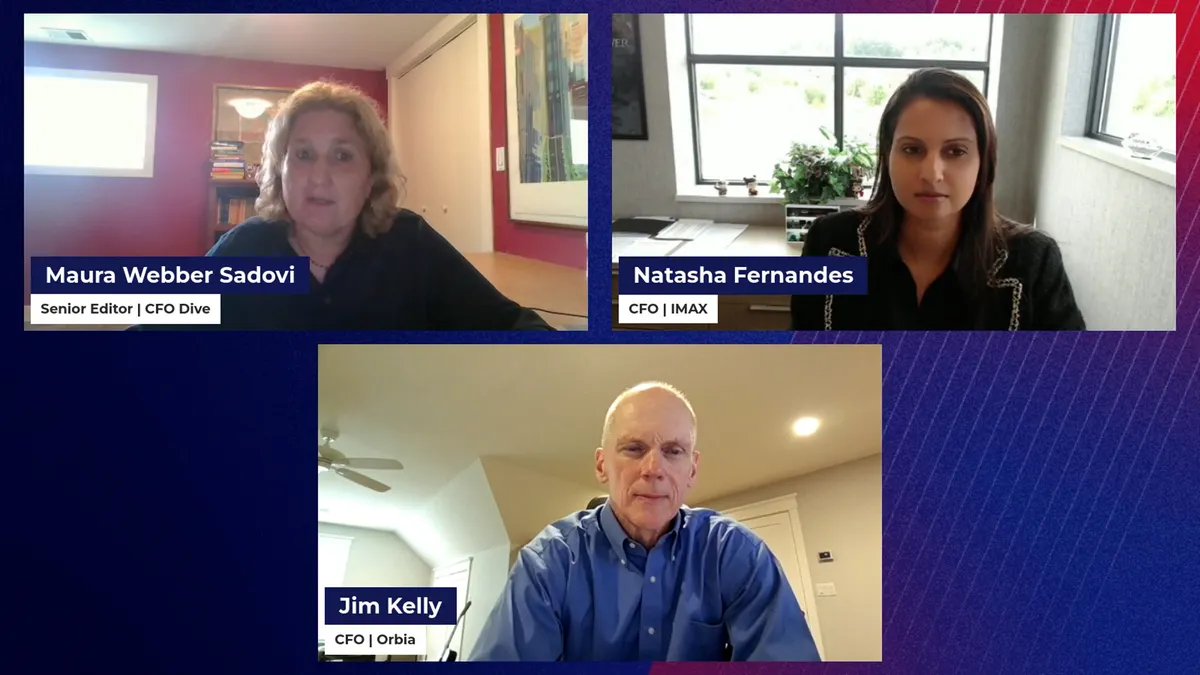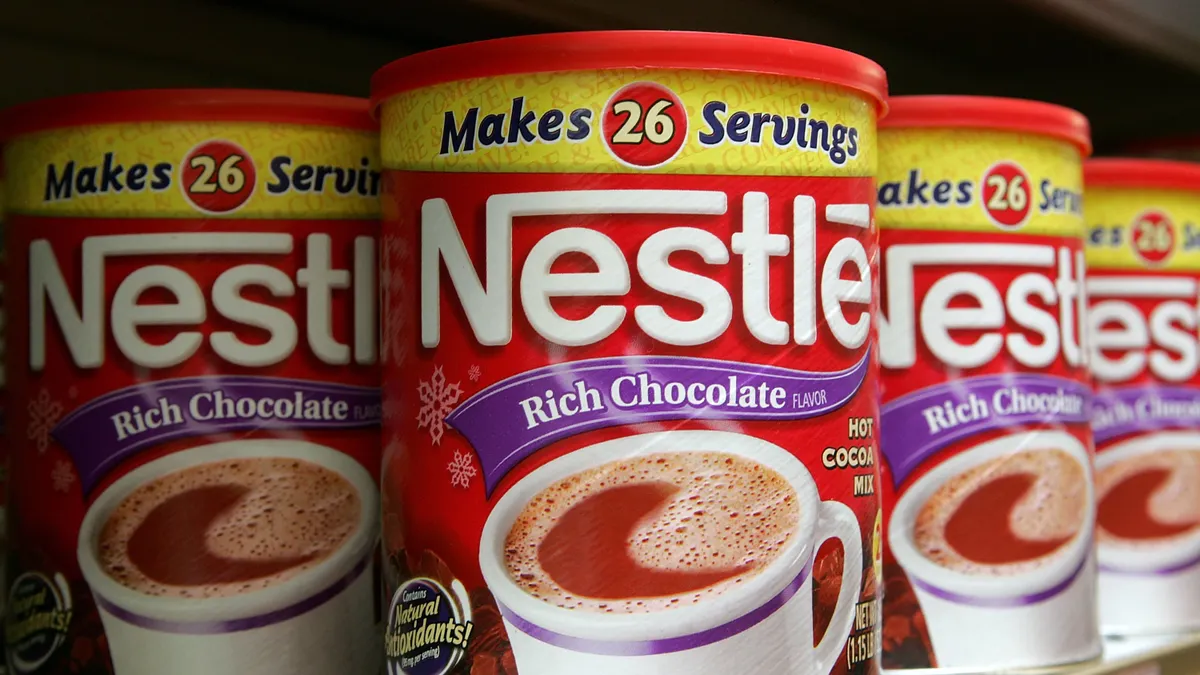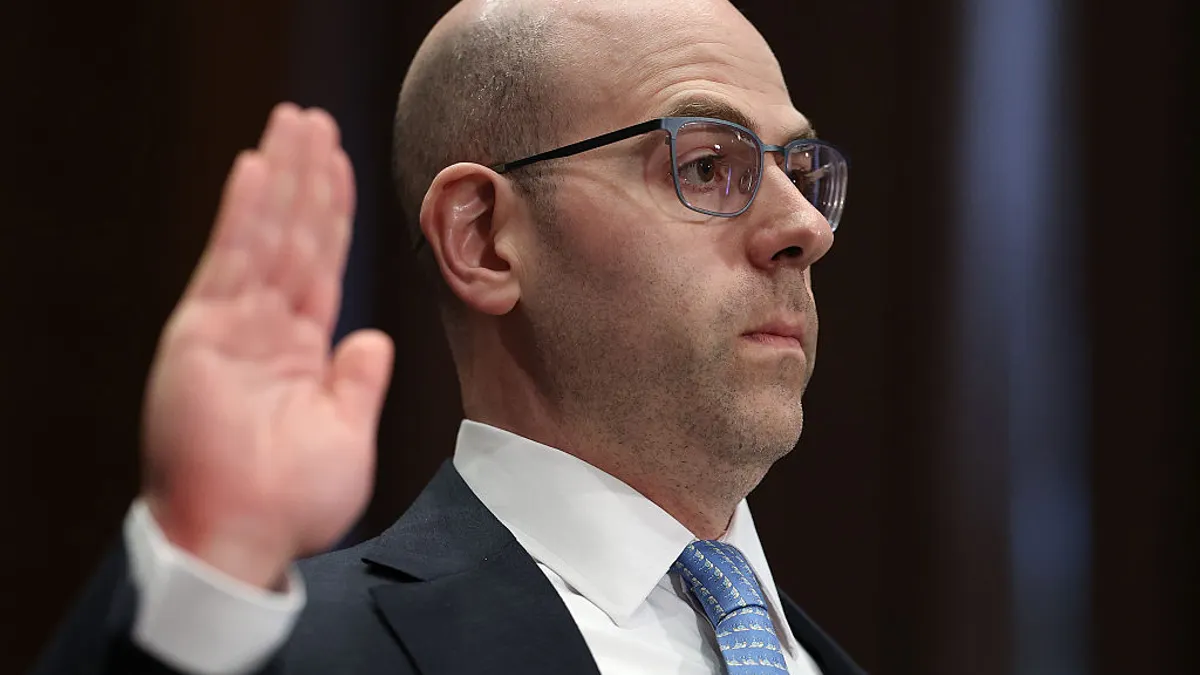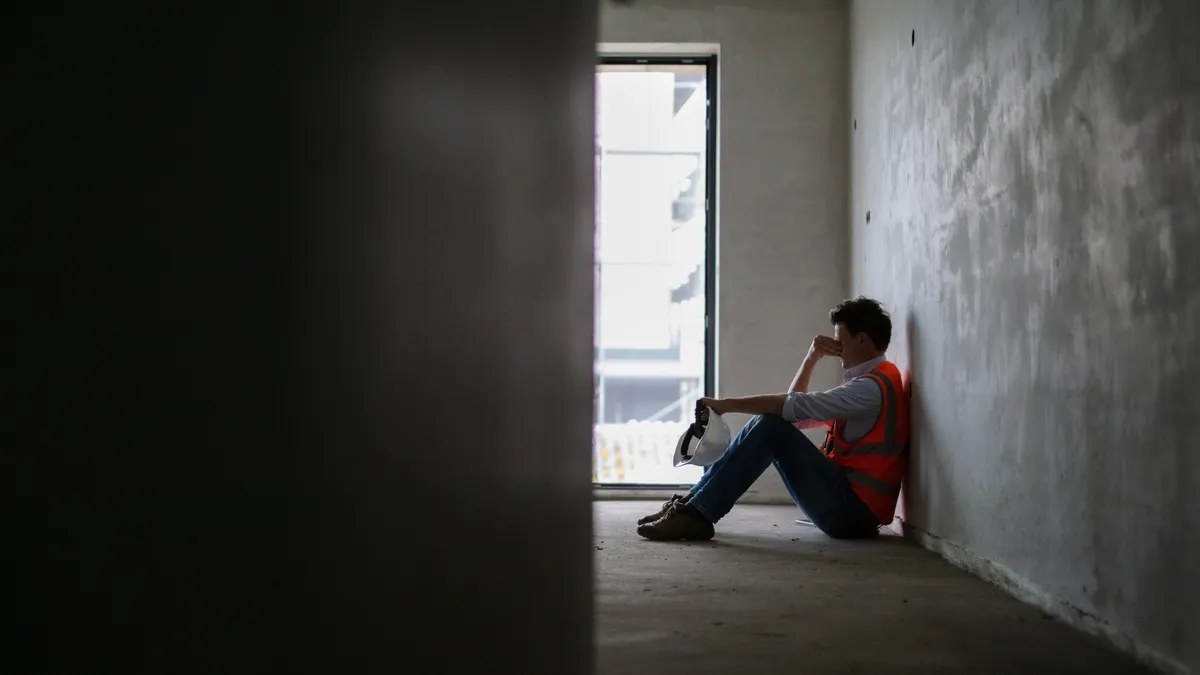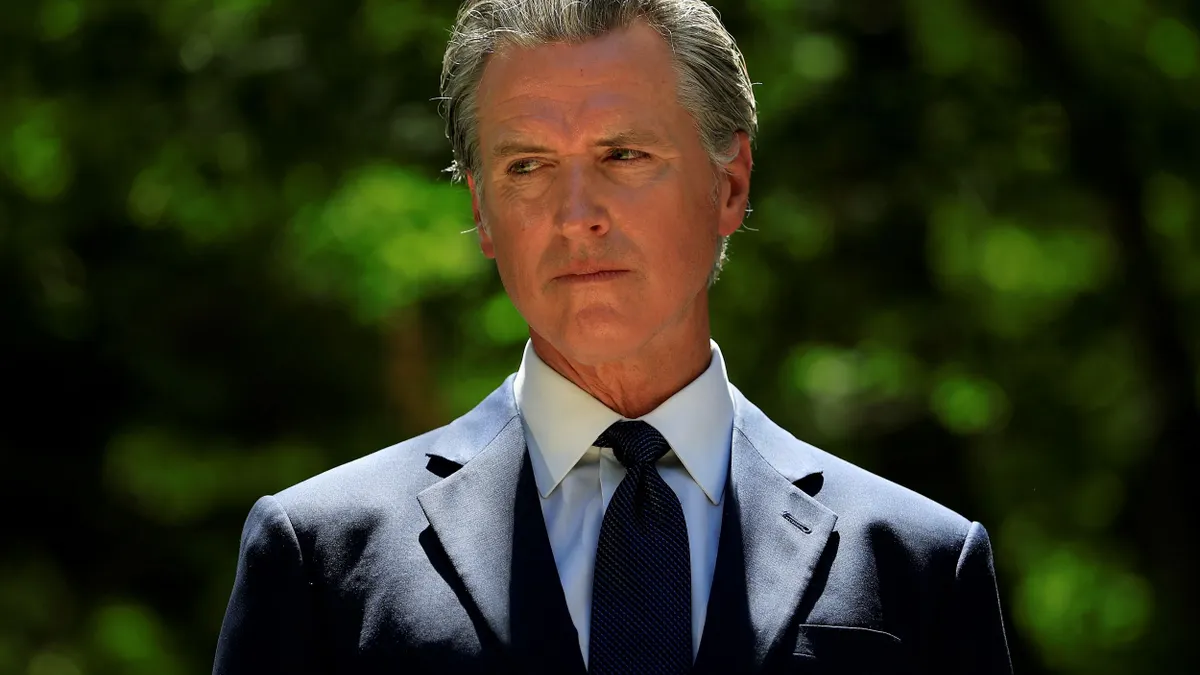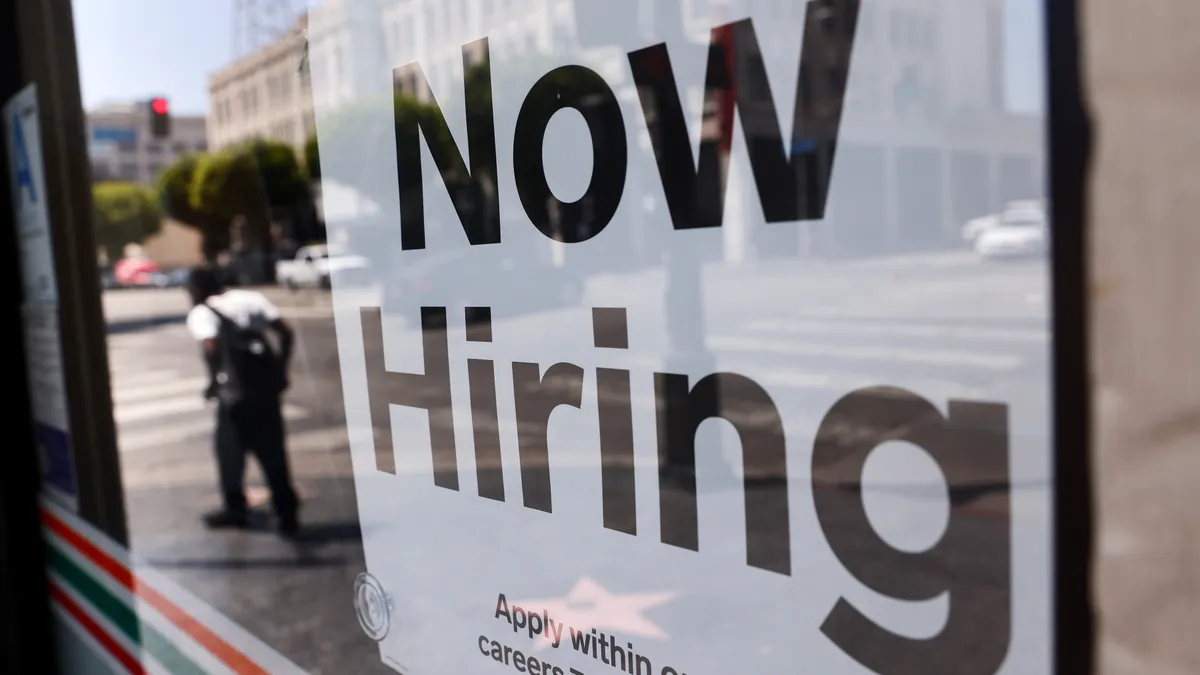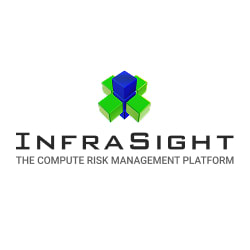This article includes insights shared during the recent live event: Risky Business: Navigating Policy and Compliance Turbulence, which was jointly moderated by the editorial teams of CFO Dive and its sister publication ESG Dive. The full panel sessions can be viewed here.
It’s important for companies to keep pace with ever-changing tariff policies — but business leaders also need to be sure they are making any decisions around those policies with an eye towards the long-term, said Jim Kelly, CFO of chemical and industrial products supplier Orbia.
“I think what you need to consider is, administrations change, policies change, and these are long-term decisions,” Kelly said during a July 9 panel that was part of CFO Dive and ESG Dive’s Risky Business virtual event. Kelly and IMAX finance chief Natasha Fernandes were speakers during a session focused on supply chain risks.
For those companies potentially mulling building more manufacturing capabilities or plants in the U.S., it’s critical to remember such projects take years of planning, building and engineering, and by the time a new factory is ready to go, “we may well be into a new administration that repeals all of these tariffs,” said Kelly, who has served in the company’s top finance seat for four years.
Weighing the risks
The July 9 Risky Business event focused on how CFOs and other executive leaders can navigate policy and compliance turbulence during an uncertain environment. U.S. tariff policies have continued to shift rapidly, muddying an already complicated risk environment, with new developments cropping up in the week or so following the event as President Donald Trump pushes forward in an ongoing trade war with key trading partners, including China, Canada and Mexico.
CFOs play an essential part in helping their companies manage such risks — keeping an eye on supply chain shifts has always been a part of her role, IMAX’s Fernandes said during the panel. However, the current environment has led to more of an emphasis on hedging for cross-border risks and to more time spent scenario modeling, she said.
The Mississauga, Canada-based company, which provides screens, film formats and projector equipment to theaters, is approaching the tariff back-and-forth through rigorous scenario planning — making sure to take a clear picture of the risks in the current circumstances and going from there, said Fernandes, a 17-year alum of IMAX who became CFO in 2022.
Kelly also stressed the importance of scenario planning — in fact, the chemical company began scenario planning for tariff policies when they first became a talking point for President Trump ahead of being elected for his second term, Kelly previously told CFO Dive in January. The industrial products maker, which is based in Mexico, felt “well-prepared” for changing tariff policies, he said, noting business should look to take a flexible approach to ensure they can adjust in time to changing norms.
The tariff environment is perhaps “a little less volatile” than it was when Kelly connected with CFO Dive on the company’s tariff strategy in January, he said during the panel. However, there are still “changes taking place very frequently,” and it’s important that the business continues to track them, he said. Orbia’s supply chain sprawls over several global markets, commercially operating in 100 countries with manufacturing operations in about 50 countries, Kelly said.
As Orbia has not been “significantly impacted” by current U.S. tariff policies, he said — much of its cross-border transactions flow between Mexico and the U.S., meaning they are presently exempt from tariffs as they fall under the United States-Mexico-Canada Agreement (USMCA). Still, that agreement could be subject to revisions; one of the things Orbia is watching is if the Trump administration will put pressure on Mexico to implement its own tariffs on China, for example, and is planning accordingly, Kelly said.
However, the business is still approaching tariff risks with an eye towards the long-term, he said, and is not considering near-shoring — moving more of its operations to the U.S. — in a material way. Rather, Orbia is taking steps such as entering into a 50/50 joint venture with OxyChem to produce ethylene, for example, which helps to limit its exposure, Kelly said.
The China scenario: 3-D glasses
Also a business with a large global footprint, IMAX is approaching tariff risks with a similar eye to costs and long-term benefits as well as risk mitigation. The aim is to “blunt” the impact; Fernandes said, with IMAX looking to identify second source suppliers and how changing policies could affect its overall project economies.
Still, sometimes the best move may simply be staying in place. For instance, the company largely sources its 3-D glasses from China, and while there may be an opportunity to source such products from other areas, “I think part of your risk assessment and evaluation is, even if you got it somewhere else, would that be a better price than if you just did China and took on the tariff risk?” Fernandes said.
“It’s not always an immediate answer to go to another country with no tariff, because your costs could still be higher overall,” she said.
Both Fernandes and Kelly also stressed the importance of clear and decisive external communication with investors and the street regarding how their companies could be materially impacted by tariff policies.
IMAX is staying “quite short-term” in its messaging, Fernandes said, as “the reality is we live in a day and age where these tariffs change month by month.” Still, inventory and tariff risks can pose a material impact to the companies’ financials, and it’s important to both effectively manage and communication those risks, she said.
For Orbia, the company has widened its range of guidance “a little further than we normally would have” to provide a transparent overview of the potential impacts of tariffs, Kelly said.



